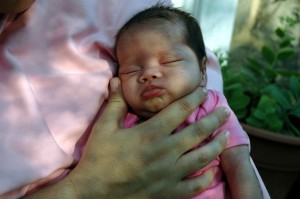Most of us recognize people we know by looking at their faces. It seems to be an automatic inherent brain function.
But what if you couldn’t delineate between people based on their faces? There are some people who simply cannot distinguish between faces even those of loved ones such as a husband, wife, son or daughter.
Lesley Stahl and 60 Minutes reports on “face blindness”, a neurological disorder where people cannot recognize faces. In a few extreme cases face blind people can’t even recognize their own face. There seems to be varying degrees to this disorder, whose scientific term is prosopagnosia, but the effects can be devastating for all sufferers.
Imagine a world where your children and even your spouse look like strangers. It is hard to imagine yet normal functioning brains, like most of us have, encounter a similar problem recognizing faces including those of loved ones if pictures showing only the faces (not hair) are turned upside down. This begs the question why is there this similarity and what part of the brain is responsible for facial recognition.
Science has not been able to concretely say what areas of the brain are exclusively dedicated to face processing. But they do know that there are two sides to this spectrum. There are the sufferers of “face blindness” as mentioned above and there are a very few of us who find it difficult to NOT recognize a face even if they only encountered it briefly years ago. The latter are dubbed “super recognizers”.
The short video below shows you the extremes of “face blindness”.
 A new study conducted by researchers from Albert Einstein College of Medicine of Yeshiva University, suggests that young children who have Sleep Disordered Breathing (SDB) are more likely to develop behavioral problems including hyperactivity and aggressiveness.
A new study conducted by researchers from Albert Einstein College of Medicine of Yeshiva University, suggests that young children who have Sleep Disordered Breathing (SDB) are more likely to develop behavioral problems including hyperactivity and aggressiveness.